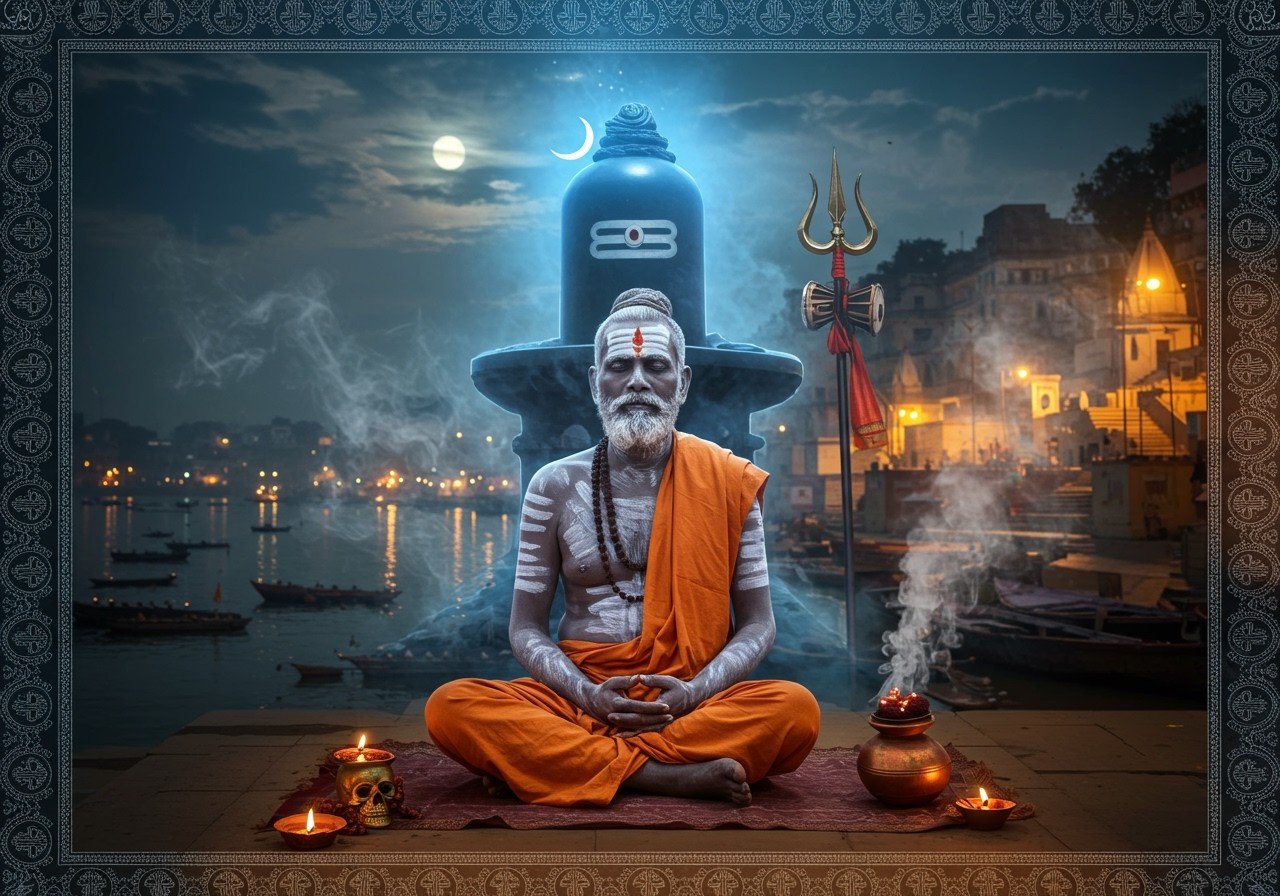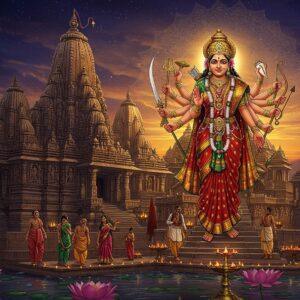
The Aghori Sadhus, a captivating and often enigmatic sect within Hinduism, are renowned for their unconventional practices. Rooted in ancient traditions and deeply entwined with Shaivism, their customs, often shrouded in misunderstanding, hold profound spiritual significance. Let’s embark on a journey to understand their world.
Origins and History
Emerging around the 14th century, the Aghori tradition draws inspiration from earlier Tantric lineages, such as the Kapalika and Kalamukha sects. Baba Keenaram, a revered saint of the 18th century, is credited with systematizing Aghori practices as we know them today, establishing vital centers in Varanasi, a city pivotal to their spiritual pursuits. You can explore more about Hindu traditions and rituals on our blog Hinduism’s Global Reach: A Look at Its Diverse Traditions.
Core Beliefs and Philosophy
Aghoris are ardent devotees of Lord Shiva, particularly in his formidable manifestation as Bhairava. Embracing the concept of non-duality (Advaita), they perceive all of existence as a unified divine entity, blurring the lines between the sacred and the profane, good and evil, life and death. By challenging societal norms, Aghoris seek moksha—liberation from the cycle of rebirth. They confront death directly by residing in cremation grounds, thus conquering the fear of mortality. For a deeper understanding of Dharma and Karma, related concepts in Hinduism, visit Dharma and Karma in Hinduism Explained.
Common Practices
The Aghori lifestyle is unique, deeply immersed in practices that mirror their philosophy:
- Cremation Grounds: They choose these solemn locations as their abode to detach from worldly concerns and confront the reality of death, seeking spiritual growth amidst the impermanence of life. Poojn.in offers a serene collection of meditation mats ideal for contemplation and spiritual practice. Discover our Sarbosadhi collection here.
- Ash Smearing: Covering their bodies with cremation ash symbolizes the ephemeral nature of life, serving as an act of reverence towards Lord Shiva. We offer authentic Vibhuti (sacred ash) sourced with utmost care and reverence for your spiritual practices. Explore our Vibhuti collection.
- Human Skulls (Kapala): Occasionally employed for eating or adornment, skulls signify the enduring life force, a potent reminder of the cycle of existence. Find beautifully crafted marble statues of deities at Poojn.in, perfect for your home altar. Browse our deity statue collection.
- Consuming Impurities: The consumption of substances considered taboo serves to challenge conventional notions of purity and impurity, highlighting the Aghori belief in the underlying unity of all things. Pure and natural ingredients for your puja needs are available at Poojn.in. Shop for Puja ingredients here.
- Minimal Clothing: By renouncing elaborate attire, they demonstrate detachment from material possessions, embracing simplicity in their pursuit of the divine.
- Intoxication: The use of intoxicants, such as marijuana, sometimes plays a role in their rituals, believed to alter states of consciousness and facilitate spiritual experiences.
- Tantra: Employing esoteric rituals and techniques, they seek to harness spiritual energies and deepen their connection with the divine. Explore the significance of Yantras and Yagyas in our detailed guide. Learn more about Yantras and Yagyas. You can find authentic Rudraksha malas, essential for meditation and spiritual practices, at Poojn.in. Discover the power of Rudraksha. Find Jaifal (Nutmeg), a sacred item used in various rituals, at Poojn.in.
Purpose
The core objective of Aghori practices is to dismantle societal taboos and dissolve the ego, paving the way for enlightenment and liberation. By embracing all facets of existence, they strive to comprehend the divine unity that underlies all creation.
Perception and Reality
Aghoris frequently encounter fear and misinterpretation due to their radical practices. However, these rituals are deeply rooted in spiritual convictions, aimed at transcending conventional norms. Beyond their formidable image, many Aghoris are known for their compassion and profound spiritual wisdom.
Addressing Common Questions and Misconceptions (2025 Insights)
Let’s clarify some common queries and misconceptions about the Aghori tradition:
What defines an Aghori Baba? An Aghori Baba is a devotee of the Aghori sect within Hinduism, recognized for their intense spiritual practices and their pursuit of enlightenment through challenging societal norms. They are often viewed as ascetics on a profound spiritual journey.
What sustains an Aghori’s dietary practices? Aghoris are known for their unconventional dietary choices, sometimes consuming items considered taboo as part of their philosophy of transcending worldly attachments. However, their diet is not solely defined by these practices.
Where do Aghoris find their place in India? Aghoris primarily dwell near cremation grounds, with Varanasi, a city steeped in spirituality, serving as a prominent location for many. Their choice of residence reflects their focus on confronting mortality and the transient nature of life.
Can we quantify the Aghori presence in India? Determining the precise number of Aghoris is challenging due to their reclusive nature and wandering lifestyles, making accurate estimations difficult. They represent a small but significant group within the larger tapestry of Hinduism.
Why this affinity for cremation grounds? Living near cremation grounds allows Aghoris to meditate on the impermanence of life and confront death directly, aiding them in overcoming fear and attachment. It is a central aspect of their spiritual practice.
Are Aghoris a threat to society? Aghoris are not inherently dangerous. Their practices may appear extreme, but they are typically focused on personal spiritual evolution and self-realization rather than causing harm to others. Misunderstandings often stem from a lack of awareness about their beliefs.
Do rituals hold a place in the Aghori tradition? Yes, Aghoris engage in unique rituals distinct from mainstream Hindu practices. These rituals can involve meditation, chanting mantras, and sometimes the use of human ashes, all aimed at spiritual growth and transformation.
Are there misconceptions surrounding the Aghoris? Yes, numerous misconceptions exist about Aghoris. They are often perceived with fear and misunderstanding due to their unorthodox practices and appearance. However, their primary goal remains spiritual enlightenment and liberation.

